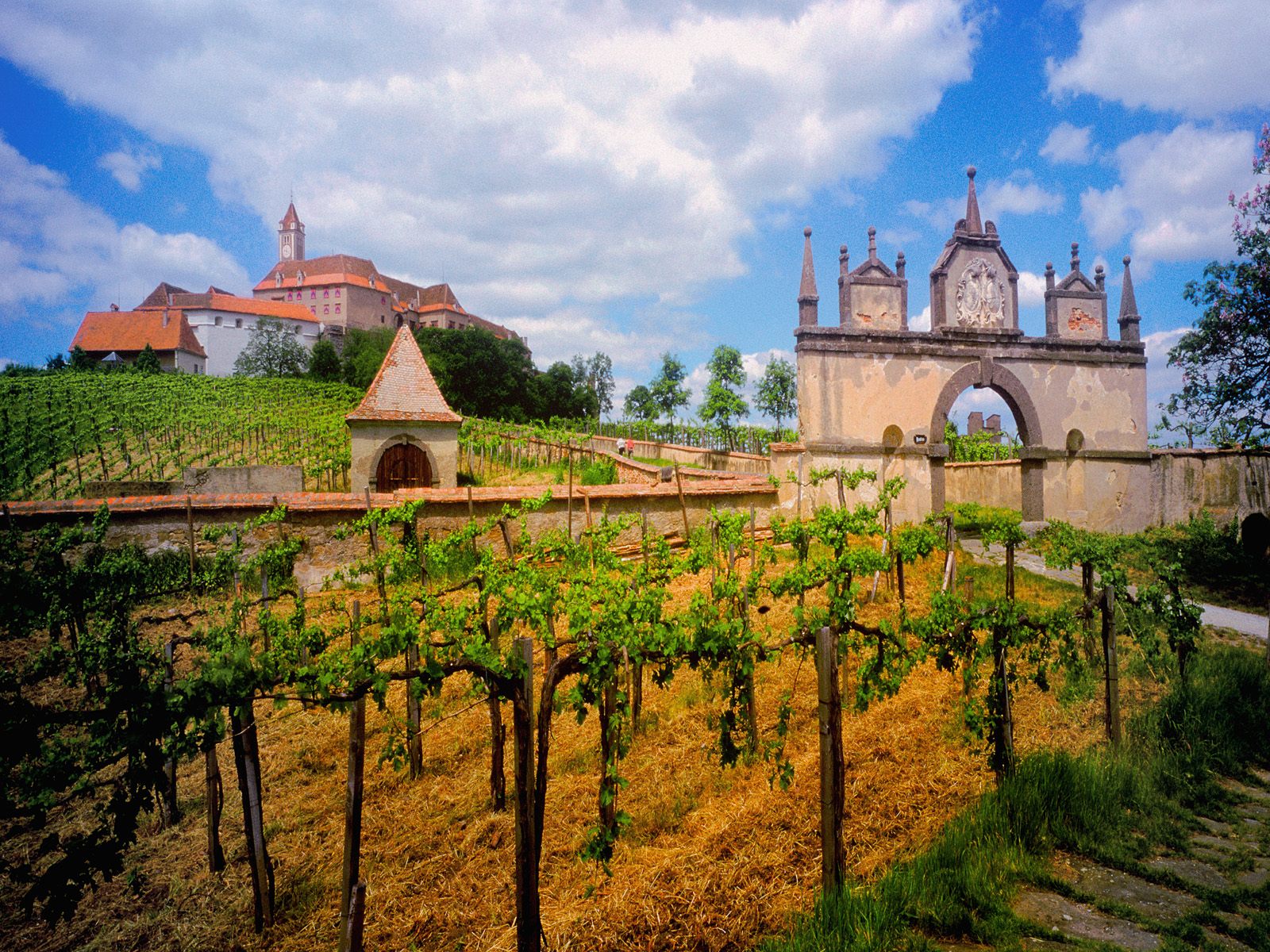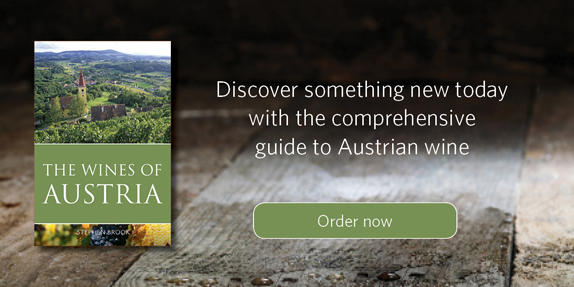Classic Wine Library
Infinite Ideas announces editorial board for Classic Wine Library
28 September 2016 by Catherine Holdsworth in Classic Wine Library
 Publisher Infinite Ideas is pleased to announce the editorial board for its Classic Wine Library, which launched this summer with nine titles. The series will be presided over by three well-known personalities of the international wine business, Richard Mayson, Sarah Jane Evans MW and Joshua Greene. Infinite Ideas’ Editorial Director, Rebecca Clare, said: “Naturally we are delighted that we have been able to attract such prestigious names to our board. They add considerable lustre to what is already a first-class programme.”
Publisher Infinite Ideas is pleased to announce the editorial board for its Classic Wine Library, which launched this summer with nine titles. The series will be presided over by three well-known personalities of the international wine business, Richard Mayson, Sarah Jane Evans MW and Joshua Greene. Infinite Ideas’ Editorial Director, Rebecca Clare, said: “Naturally we are delighted that we have been able to attract such prestigious names to our board. They add considerable lustre to what is already a first-class programme.”
Richard Mayson has been a freelance wine writer and lecturer and consultant since 1989. He writes for Decanter and The World of Fine Wine, and is an award-winning author of five books on wine, Chair of the Decanter World Wine Awards for Port and Madeira Wine and the owner of a vineyard in the Alto Alentejo region. In 2014 Richard Mayson received the Louis Roederer International Wine Feature Writer of the Year Award.
Sarah Jane Evans is the current Chairman of the Institute of Masters of Wine and is an award winning wine writer and author. She became a Master of Wine in 2006 and judges and lectures internationally. She has a special interest in the wines of Spain and is co-Chair of the Decanter World Wine Awards for Spain and for Sherry.
Joshua Greene is an American wine critic and the publisher and editor-in-chief of Wine & Spirits magazine, which has a circulation of 90,000, mostly in the US and Canada. The magazine’s panels taste more than 15,000 wines a year. Those recommended by the panels are then reviewed by a team of critics, each of whom covers specific territories.
The Classic Wine Library seeks to educate, entertain and inform readers, extending from wine professionals, students and collectors to interested consumers and tourists. It covers a wide range of subjects, from specific regions to entire countries, including the history, climate, geology and topography, grape varieties, wine-making techniques, ageing and maturation and producers as well as useful travel recommendations. Many titles contain glossaries to explain or amplify any local or scientific terms. Books in the series also feature a directory to the country or region in question. The publisher plans to have 40 wine titles in print by the end of 2018.
What makes a biodynamic wine?
4 August 2016 by Catherine Holdsworth in Classic Wine Library
Nine preparations and a sustainable approach to farming
Soaring in popularity and demand over the past decade, organic and biodynamic wines are on the rise. But what is the difference between organic and biodynamic farming? In 1924 Rudolf Steiner came up with the idea of biodynamics as a system; it pre-dates the global agricultural movement and is in fact considered the oldest alternative agriculture movement. In his new book, Biodynamic wine, author Monty Waldin explains how biodynamics takes organic farming to a more spiritual level, and gives a comprehensive explanation of all that entails. As Monty says, once given an understanding of the principles and preparations involved anybody can cultivate biodynamic plants:
‘The particular feature of biodynamics – and where biodynamics differs from organics and indeed all other forms of alternative agriculture – is the use of nine so-called ‘biodynamic preparations’. These are made from cow manure, the mineral quartz (also called silica), and seven medicinal plants: yarrow, chamomile, stinging nettle, oak bark, dandelion, valerian and Equisetum arvense or common horsetail. These nine preparations are applied to the land or crops either by being first incorporated into a compost pile or by being diluted in water as liquid sprays.

Biodynamic preparations are used in homeopathic quantities, meaning they can produce an effect in extremely diluted amounts, but they are not homeopathic treatments per se. Their purpose is to make the farm and farmer, its crops, animals and wild habitat, self-sufficient, self-sustaining and socially, economically and spiritually robust. The methods used to make some of the preparations may seem strange initially but are neither high tech, expensive, costly to the environment nor potentially harmful. Anyone, from children to grandparents, can (and do) make these preparations.’ Whilst the concept of biodynamics may appear otherwordly, stripped to its core, the process simply entails working in harmony with nature.
Biodynamic farming extends to the consideration of a vineyard as an entire ecosystem and follows lunar and other celestial cycles to produce a wine that resonates with the dynamic rhythms of nature.
So whether you were already aware of the biodynamic movement, listened to the Hemsley sisters discussing its popularity or discovered a new biodynamic bottle at the weekend, there is plenty more to learn about this subject. Not only is it environmentally sympathetic, according to its growing number of advocates it also produces a better glass of wine.
If you’d like to become a biodynamic buff why not click the link to pick up a copy of Monty’s revealing and instructive book. See also our previous biodynamic blog post – Are cows’ horns filled with manure going to change our wine-drinking habits?
Biodynamic wine by Monty Waldin
27 July 2016 by Catherine Holdsworth in Classic Wine Library
Are cows’ horns filled with manure going to change our wine-drinking habits?
For years, wines have been sorted into fairly standard categories, by region, colour or style, but there is a growing phenomenon among winemakers and consumers that is challenging that categorisation: biodynamic wine production. This isn’t any sort of voodoo or quasi-religious trickery, nor is it so easily put in the box labelled purely ‘organic’. Biodynamic wine is seeking to shake up how we make wine, as well as how we drink it.

A new book by Monty Waldin, Biodynamic wine, takes the reader on a journey from how the grapes are grown to the best ways of tasting biodynamic wine, highlighting clear distinctions between the standard ‘chemical’ wine-growing and an approach which is more sympathetic to the rhythms and forces of nature. Whatever your preconceptions about this holistic method of production the results speak for themselves. Waldin’s new book shows that vines grown in biodynamic conditions deliver better flavour and growing success. Demeter, the global biodynamic certification body, reports winemaker annual membership growth of 20 per cent, and the US now has more certified wineries and vineyards than any other country in the world except France, while New Zealand aims to have as much as 20 per cent of its vineyards certified by 2020.
The popularity of biodynamic wine has grown immensely. The percentage of the world’s wines that are biodynamic and organic has grown from 0.5 to 6 in this century. But what exactly is it? Biodynamic wine is intimately connected with the terroir. The main distinction between biodynamic and conventionally grown grapes is that biodynamic growing methods develop the vineyard’s full potential and then capture the distinctive result in the bottle. As Waldin says: ‘biodynamics remains the best tool with which to make terroir-driven wine of the highest quality while enhancing rather than depleting the vineyard it came from.’ And that is exactly what consumers want: the best terroir in the bottle.
Waldin explains the theory behind this newly popularised method, which has its roots in the early twentieth century teachings of Rudolf Steiner, and shows why more and more growers are going biodynamic. Far from being mere voodoo Waldin says that ‘biodynamics offers effective, creative, enjoyable, stimulating and sustainable solutions to common problems experienced by contemporary winegrowers, such as reduced soil fertility, vines’ diminishing resistance to pests and diseases, and grapes which, despite being increasingly complicated to ferment, risk producing ever more banal wines largely devoid of individuality and interest.’
Biodynamic wine is an excellent guide for wine enthusiasts and students who want to know more about the most argued about development in the winemaking world in recent years. It celebrates ecological and biodiverse winemaking techniques and illustrates the origins of this global wine phenomenon. It is a must-read for wine-lovers everywhere.
Monty Waldin has been involved in biodynamic wine since 1993, when he visited his first biodynamic vineyard in Bordeaux. Since then, he has become an expert on biodynamic wine production and this growing trend among winemakers and consumers. He is the first wine writer to dedicate himself to organic, biodynamic, and natural wine-growing. He has made wine in both hemispheres and has worked in conventional (‘chemical’), organic, biodynamic and natural vineyards and wineries and is uniquely positioned to compare the pros and cons of each. These experiences have allowed Monty to get behind the muck, magic and mystery of wine, giving him a distinctive and respected voice amongst wine growers, wine makers and wine consumers.
Click here to buy Monty Waldin’s Biodynamic wine.
Where can you get great Austrian wine?
30 November 2015 by Catherine Holdsworth in Classic Wine Library, Wine and spirits
No, this isn’t a joke, we’re not going to throw in a punch line that will undoubtedly fall flat. Austrian wine is relatively rare on the supermarket shelves and in the fridges of avid wine drinkers and yet it is experiencing something of a renaissance in quality and popularity. Of course, as a publisher, we would advise that if you are new to Austrian wine, or even if you aren’t, that you read The wines of Austria by Stephen Brook, which provides a comprehensive analysis of the different producers of Austrian wine.
Going straight to the vineyards for a spot of tasting and then leaving with a few cases would, we’re assuming, be the ideal way we all acquire wine. But since Austrian vineyards are currently out of season and your holiday would most likely be on the chilly side, we’ve done the scouting for you so that, if you fancy it, you can pick up a great bottle of Austrian wine when you’re next doing your weekly shop. Luckily, we’ve been able to give you excellent notes on the vineyards in which these wines are produced, all from Stephen Brook’s excellent book.

Waitrose perhaps has the best selection of Austrian wine, and the grape most famously associated with Austrian wine is in both their 5 star white wine offerings. The first is from Domane Wachau:
There are 440 hectares of vineyards cultivated by 250 families, and 70 per cent of the
vines are Grüner Veltliner. For many tourists the cooperative’s tasting room is an essential stopping place, so it is not surprising that a good deal of the production is of fairly commercial wines. The largest volumes of their more classic wines were released under the Terrassen Thal label, but today there is increasing emphasis on single-vineyard wines. This is sensible as the cooperative’s members are richly endowed with exceptional sites. [However,] [i]t’s the single-vineyard white wines that are the core of production.
I’ve tasted wines made here in the late 1960s and they were still excellent, but they were made in a sweeter style than would be acceptable today. Although not all of the wines are outstanding, the general quality level is astonishingly high. It doesn’t hurt that the cooperative has access to such sites as Pichlpoint, Achleiten, Singerriedel, Loibenberg, and Kellerberg. The Smaragd wines in particular can be exceptional and long lived. It’s also worth looking for other varieties such as Neuburger and Roter Traminer, which can also be of high quality.
Waitrose’s second offering of white wine comes from the vineyard of Markus Huber:
[The Huber vineyard] release[s] a number of different Grüner Veltliners, including Oberer Steigen from 35-year-old vines, the single-vineyard Berg, and the weightier Alte Setzen, a DAC Reserve made from vines up to 65 years old. The two top Rieslings are Engelsberg, a blend from two sites, and Berg, a DAC Reserve aged both in casks and steel tanks. In certain years he also produces an excellent Riesling Eiswein. The top wines are fermented in neutral Austrian acacia casks, and aged for 9 months on the fine lees. Huber is skilled and ambitious, and his wines are stylistically consistent, showing great clarity and a dry structure. Riesling Berg and Grüner Veltliner Alte Setzen are usually the top wines, but the other bottlings are very close in quality. The top wines age effortlessly, although they are accessible young.
The highly rated red wine selection offered by Waitrose are both from Rabl’s vineyard: Schenkenbichl Reisling Reserve and Titan Zweigelt, as is Marks and Spencer’s Rabl Grüner Veltliner:
A large estate, Rabl supplements its own 80 hectares of vineyards by purchasing from another 20 hectares. Grüner Veltliner comes from Spiegel, Käferberg, and Dechant, and Riesling from Schenkenbichl. The Rabls father and son, both named Rudolf, are often, though not dogmatically, proponents of skin contact rather than whole-cluster pressing, which may account for the supple texture of their wines. The Rabls also produce sweet wines quite frequently; in 2006 there was an opulent Traminer Auslese and a silky Grüner Veltliner Eiswein, and a splendid, pineappley Grüner Veltliner TBA, and there were more in 2007 and 2011. In 2012 and 2013 they excelled with the Grüner Veltliner Käferberg ‘Alte Reben’, wines of weight, concentration, and flair.
So there you have it, Austrian wine is infiltrating the UK’s wine market once again and, with these excellent facts about their origins, you’re sure to impress at your next dinner party.
The Infinite Ideas interview with Stephen Brook
9 November 2015 by Catherine Holdsworth in Classic Wine Library, Wine and spirits
Prolific wine writer Stephen Brook, author of The wines of Austria had a quick chat about his favourite subject.
Perhaps the best known Austrian grapes are Grüner Veltliner and Blaufränkisch. What are the characteristics of these grapes that make them best suited to be grown in Austria?
Gruner Veltliner is wonderfully versatile. It can produce crisp, refreshing wines for early drinking, and at the other end of the spectrum, powerful mineral wines that can age for decades, developing great complexity. The variety is grown in the Czech Republic, California, and New Zealand, but it rarely shows the typicity of the Austrian originals.
Much the same is true of Blaufrankisch. It can be produced as a simple, fresh red, rather like Beaujolais, or as a full-bodied, often quite oaky red with structure and weight. It’s a wine that should show good acidity, making it an ideal and versatile wine with food. It is also grown in Germany, under the name Lemberger, But it thrives best in eastern Austria.
What have been the biggest changes in the production of Austrian wine in recent years?
White wines, dry and sweet, have always been outstanding in Austria, but the real progress has been with red wines, which were frankly mediocre thirty years ago, but are improving all the time, especially now that the tendency to over-oak the wines is being increasingly resisted.
In The wines of Austria, you’ve written a lot about the producers of Austrian wine and how there are a lot of family-owned companies. Do you see more producers breaking into the trade? Do you think there is an opportunity for new varieties?
Austria doesn’t really need new varieties. It has a dozen varieties that have been grown with success for many decades, from scarce whites such as Zierfandler to indigenous reds such as St Laurent. Not to mention widely known varieties such as Riesling, Pinot Blanc, and Chardonnay.
Do you think global warming has affected the production of Austrian wine?
Hard to say, though the climate does seem to have been become more unpredictable.
Do you think that technology has generally been a good thing or a bad thing for Austrian wine production?
Modern technology, competently used, is always a positive thing, but most wineries don’t have the means for costly gadgetry and manage to produce excellent wines without it too.
Austrian wine has had some bad publicity in the past, and despite the fact that it was some time ago, that idea still resonates with many people; how would you convince today’s drinkers that it’s worth trying?
The so-called ‘wine scandal’ of 1985 was a serious betrayal of trust, but nobody got ill or died, in contrast to Italian scandals of the same era that resulted in multiple deaths from adulterated wine. So the Austrians have been published severely for their localised transgressions, but this is now long in the past, and the Austrian wine industry is as tightly controlled as any in Europe.
Wine-tasting is quite a specialised skill. How did you get into it – were you a natural or did you have to learn?
I had to learn, but I was also keen to learn, and paid to attend tutored tastings of top wines to learn how to appreciate them.
Can you tell us about the worst wine you have ever tasted?
Retsina from Greek cooperatives in the 1980s.
Who is the greatest character you have met during your long career in the wine trade? Can you tell us about him/her?
Too many to recall here: Robert Mondavi and Randall Grahm in California, Giacomo Braida in Italy, and, in Austria, the great Alois Kracher, whom I write about in detail in my book.
Other than Austrian wine what is your favourite drink – not necessarily alcoholic?
Top German Riesling.
The wines of Austria is available now, to purchase from Infinite Ideas at a special discounted price of £25.00, please email info@infideas.com or call 01865 514888
When you’re next buying wine, consider Austria
6 October 2015 by Catherine Holdsworth in Classic Wine Library, Wine and spirits
When you think about Austrian alcohol, you’re probably more familiar with beers and Oktoberfest thanks to the Bavarian influence and how fond they are of a good pint. It’s true, when I was backpacking around Europe, I never thought to order an Austrian glass of wine, rather it was straight for the home brew.
You’re most likely more familiar with the terroirs of France, Australia, New Zealand, even Spain, but most likely not Austria. Yet did you know that Austrian wine has a history dating back to the Habsburgs? Yes, that’s right, while all that furore over land and such was being fought over, it is likely that the winners would sit down with a nice glass of dry white from their own vineyards.
So consider this, the next time you’re throwing a dinner party, why not spend that little bit extra on a bottle of Austrian wine. More than anything it will make you look like a true wine connoisseur instead of going for your usual bottle that everyone’s had before. It will be a great starting point for conversation about wines, travel and the great food that you are more than likely to serve to your guests.

If you’re wondering what to serve it with, perhaps some excellent hearty Austrian food such as goulash, schnitzel or, if you’re really brave, offal. Though we suggest that, unless you are actually Austrian, springing offal on your guests is a risky move so perhaps save that for next time or offer them an alternative in case the offal is not to their liking. Surprisingly, Austrian wine goes well with Mediterranean cuisine so, if you’re a vegetarian, perhaps you could cook something much lighter than a hog roast. More information on what goes with Austrian wine can be found here.
Our book, The wines of Austria by Stephen Brook will be published on 19 October. If you can’t wait until then, we have some advice about how to introduce your palette to new wines from our book, Secrets of wine by Giles Kime:
Even on the first leg of the path to vinous nirvana, it is important to expose your palate to other styles of wine without letting them cloud your understanding. There are a huge number of wines that no one except a few hardened wine buffs is aware of. Plenty of wines are made purely for local consumption, such as Austria Gruner Veltliner, Swiss Chasselas, Italian Aglianico, Uruguayan Tannat and Canadian Ice Wine. Though initially you should keep these wines at arm’s length, they will eventually be essential for pushing your taste buds to the extremes – just as the best fitness training programme will exercise muscles that you don’t normally use. The chances are that you won’t like them. But even if you don’t they will offer flavours and aromas that your palate and nose wouldn’t otherwise be subjected to. They will stretch your senses to the extremes of their experience.
The secret to tasting offbeat wines is never to get too involved. You don’t need to know a great deal about wine in order to enjoy it. It doesn’t really matter whether Gruner Veltliner, Tannat, Aglianico or Eiswein is a grape or a style of wine. Nor does it really matter whether they come from Austria, Uruguay, Italy or Canada. What is far more important is that you, your palate and your nose are receptive to them. Of course, when – or if – you find an offbeat wine that you like, that might be the time to investigate the winemaking tradition from which it springs.

